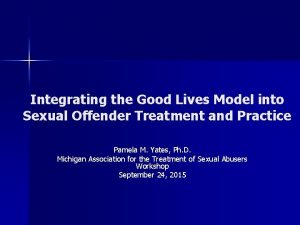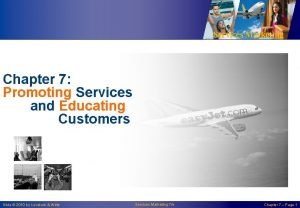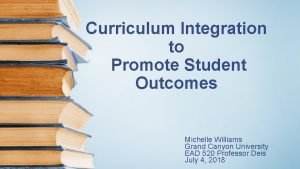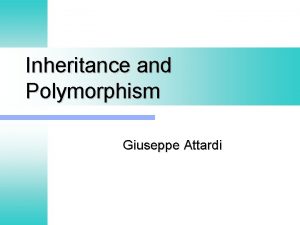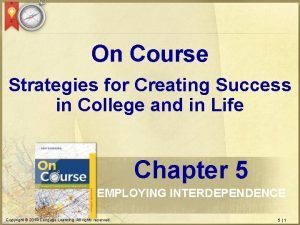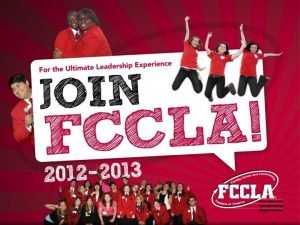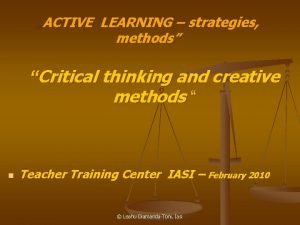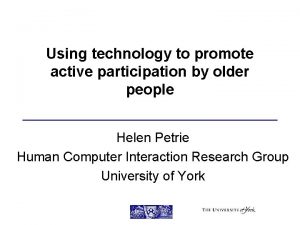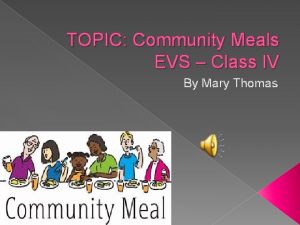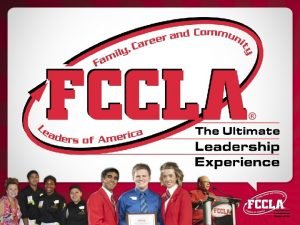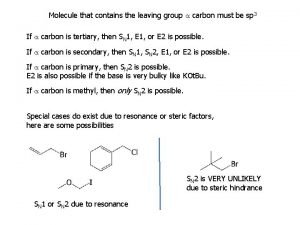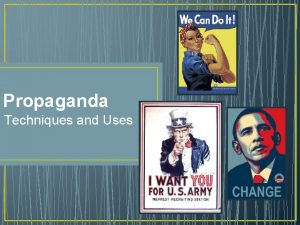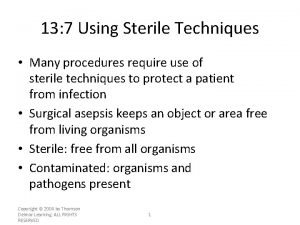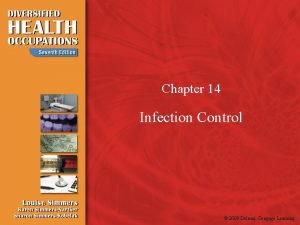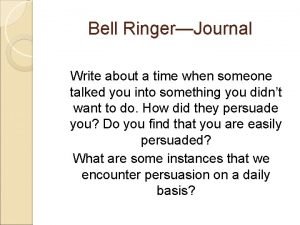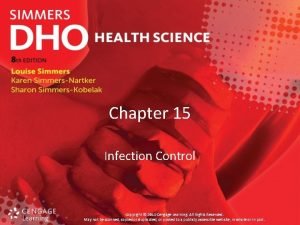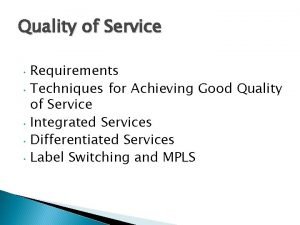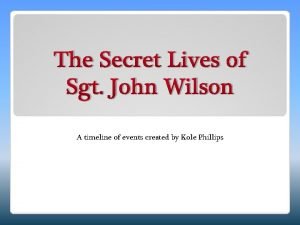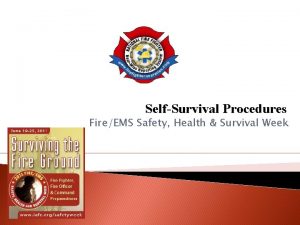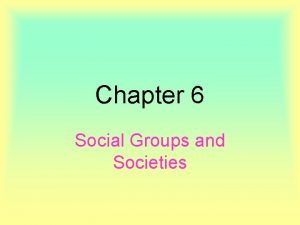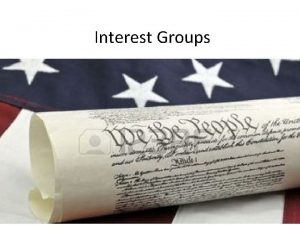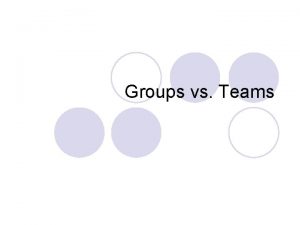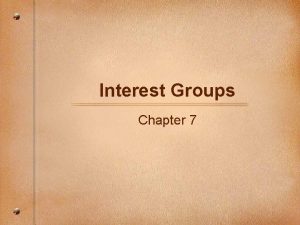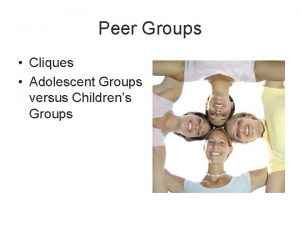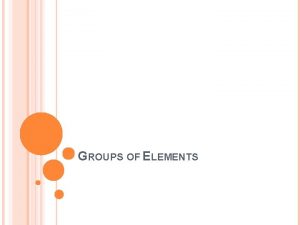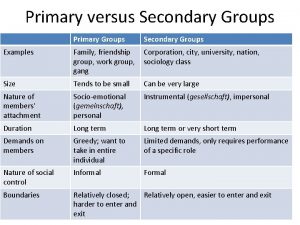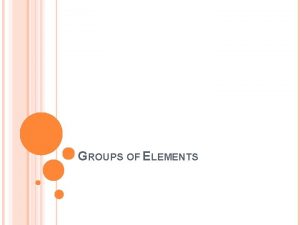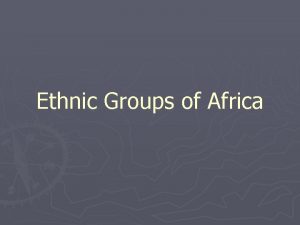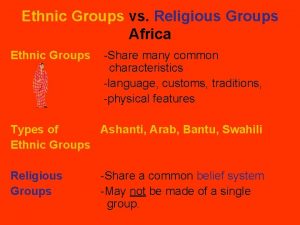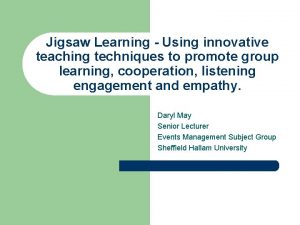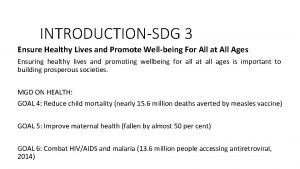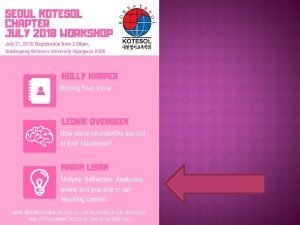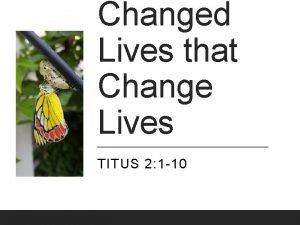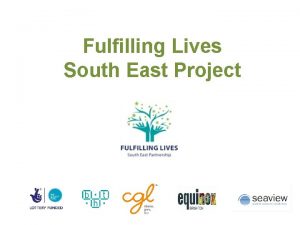Good Groups Promote Good Lives Using GroupCentered Techniques


















































- Slides: 50

Good Groups Promote Good Lives: Using Group-Centered Techniques to Actualize GLM Primary Goods Jumper & Jennings – Illinois ATSA Conference: March 16, 2017 Shan Jumper, Ph. D. Clinical Director DHS Treatment and Detention Facility Rushville, IL sjumper@libertyhealth. com Jerry L. Jennings, Ph. D. Vice President of Clinical Services Liberty Healthcare Corporation Bala Cynwyd, PA jerry. jennings@libertyhealth. com

Workshop Goals • Understand how a fully engaged group can promote the identification and development of primary goods per the Good Lives Model. • Learn group-centered group techniques to facilitate cohesion and therapeutic climate, which can help sex offenders to strengthen prosocial attitudes and primary goods. 2 Illinois ATSA Training Workshop

Survey: Are you using Good Lives? • Mc. Grath (2009) survey showed 33% of treatment programs in US and 50% in Canada use GLM model • How many familiar with GLM? • How many are currently using GLM? § Using GLM client workbooks? § Using GLM individually? § Using GLM in groups? • Our goal to talk specifically about GLM in groups 3 Illinois ATSA Training Workshop

Quick review of the GLM basics • Certain goals and values are common to all people (e. g. , family, community, mastery, happiness, etc. ). • One’s personal identity and meaning derive from a basic set of values and commitments. • The problem for sex offenders is that (1) they are unaware of the primary goods that they value most highly and pursue most strongly, and (2) they tend to view the means to seek these goods (e. g. , sexual activity) as the major goal to pursue. 4 Illinois ATSA Training Workshop

Quick review of the Good Lives Model • Sexual offending reflects socially unacceptable and often personally frustrating attempts to pursue primary human goods. • It is not enough to equip individuals with skills to control or manage their risk factors, it is imperative that sexual abusers also fashion a more adaptive personal identity and life style that yields meaning and fulfillment. 5 Illinois ATSA Training Workshop

Two primary aims of therapy in GLM 1) Reduce the offender’s level of risk by targeting his array of dynamic risk factors (i. e. , criminogenic needs); and 2) Promote the pursuit of primary human goods in prosocial ways, especially those goods valued most highly by individual and related to his personal identity. 6 Illinois ATSA Training Workshop

Two primary aims in GLM (cont’d) § However, in GLM, “risk factors” are conceptualized as omissions or distortions in internal conditions (skills, values, beliefs) and external conditions (social supports, resources, opportunities). § Therefore you can reduce criminogenic needs/risk factors by building and instilling positive internal and external conditions. 7 Illinois ATSA Training Workshop

What are the 11 “Primary Goods”? • • • 8 Healthy living and functioning Knowledge: Learning and knowing Excellence in work (mastery) Excellence in play (mastery) Autonomy, power & self-directedness Peace of mind (freedom from emotional turmoil & stress) Relationships & friendships (intimate, romantic, and family) Community: Being part of a group Spirituality: Having meaning and purpose in life Happiness (pleasure and feeling good in the here-and-now) Creativity (expressing oneself through alternative forms) Illinois ATSA Training Workshop

Three clusters of primary goods The body § Healthy living and functioning § Peace of mind (emotional regulation) § Happiness (pleasure) Social life § Relationships & friendships § Community § Spirituality The self § Knowledge § Autonomy & self-directedness § Creativity 9 § Excellence in work § Excellence in play Illinois ATSA Training Workshop

Goods associated with treatment components 7 COMPONENTS OF SO-SPECIFIC BEST PRACTICES OVERARCHING PRIMARY GOOD(S) Establishment of therapy and group norms Community Understanding offending/restructuring offense supportive beliefs Relatedness and Knowledge Deviant sexual arousal Relatedness and Pleasure Victim impact/empathy training Knowledge and Inner Peace Affect regulation Inner Peace Social skills training Relatedness, Autonomy, and Community Relapse prevention/safety planning Knowledge and Agency From Ward, Mann, Gannon (2007) 10 Illinois ATSA Training Workshop

Areas of deficiency related to attachment • • • 9 studies show sex offenders are more lonely 9 studies show SOs have pervasive intimacy deficits 5 studies show SOs more isolated No strong findings of social skill deficits. Adverse childhood upbringing: § 3 studies SOs described both parents as cold, uncaring, indifferent, rejecting, hostile, or detached § 4 studies found low levels of parental care, consistency, & supervision with high levels of harsh control, neglect & rejection § 3 studies show higher rates of parental neglect, violence & disruption 11 Illinois ATSA Training Workshop

Adverse Childhood Experiences Adverse Childhood Experience Scale (Levinson, Willis and Prescott (2015) gave ACE to 679 sex offenders: § 3 x the rate of child sexual abuse § 2 x the rate of physical abuse § 4 x the rate of emotional neglect and broken homes, and § 13 x the rate of verbal abuse 12 Illinois ATSA Training Workshop

Group Therapy Rationale Our clients are social beings who live in relationships. A sex offense is, in part, a problem of relationships: § Lacking relationships/alienation/loneliness § Exploitative/status/power § Unstable § Inappropriate Group therapy is a relationship experience – an opportunity to experience safe, meaningful, rewarding, and consistent relationships. 13 Illinois ATSA Training Workshop

Conclusion • Group therapy is an ideal therapeutic modality for the Good Lives Model that is both practical and multi-purposeful. 14 Illinois ATSA Training Workshop

What does GLM say about using groups? • Not much!!! • “Most GLM-C oriented therapy is conducted in groups…” (Ward, Mann, Gannon, 2007) • 416 page client workbook – only two glancing mentions of group (Yates Prescott, 2010) • Only one paragraph on using group at the start of treatment to “establish therapy and group norms” (Ward, Mann, Gannon, 2007). 15 Illinois ATSA Training Workshop

Using group to start GLM treatment • Members “encouraged to create rules that enhance group cohesiveness” (i. e. , norms of respect, listening, confidentiality, and constructive challenging). • This open discussion facilitates a therapeutic climate where members can explore problems without undue fear of attack or stigmatization. • And the process of negotiating rules with the others also promotes relatedness. • In fact, use of “group agreement” is fundamental, empirically-based principle in general group therapy. 16 Illinois ATSA Training Workshop

What ELSE can GLM use groups for? 1) Instilling hope in a “good life. ” 2) Strengthening motivation for treatment and change. 3) Providing a direct, living experience of GLM goods of community and social relatedness. (as a secondary good) 4) Bonding in a group can be a primary GLM goal in itself. § for civilly committed SVP or sex offender serving a long sentence (this IS his world); or even lonely offender in community 5) Treating attachment deficits as a barrier to good lives. 6) Assessment of primary goods from behavior in group. 17 Illinois ATSA Training Workshop

What ELSE can GLP use groups for? 7) Supportive social forum for discussing and exploring the selection and prioritizing of one’s primary goods. 8) Opportunity for modeling and observing others’ planning and pursuit of good lives goals. 9) Building social skills/competency. 10) Opportunity for problem solving efforts to achieve goods (e. g. , identify & discuss missing goods and/or misguided goods, better ways). 11) Practice in explaining one’s Good Life Plan and Risk Management Plan to others – especially parole, family members, and social supports) 18 Illinois ATSA Training Workshop

BUT to take advantage of these benefits, group must be interactive and group-centered! Therapist-centered group 19 Group-centered group Illinois ATSA Training Workshop

Therapist-centered group 20 Illinois ATSA Training Workshop

Facilitate member to member interaction • The most important action you can do in a group is to facilitate cohesion • The most important action you can do in a group to facilitate cohesion is to facilitate emotional expression and member to member interactions within a safe and predictable structure 21 Illinois ATSA Training Workshop

Facilitating interaction – Facilitating (=reinforcing) healthy, meaningful social interaction and bonds • Facilitating interactions among group members. • Group-focused interventions impact the whole group or multiple members of the group rather than a given individual. • Validating honest disclosure/sharing with peers. • Validating emotional disclosure/sharing with peers. • Pointing out commonalities and shared experiences among group members. • Pointing out the occurance of caring acts and bonding interactions among members. • Developing the sense of belonging to group. 22 Illinois ATSA Training Workshop

Group example: An outpatient group has been meeting weekly for many months. Tim, one of the newer members, was struggling to achieve his treatment goal of presenting the details of his offense. “I am really nervous, I can hardly speak. ” Several members of the group offered reassurance, saying, “It’s okay, we’ve all been there. This goal is not easy. ” Tim replied, “But I don’t know why I did it [my offense]. ” The group therapist asked, “What do you hear the group saying to you? ” Tim dismissed the supportive comments from the group, protesting, “But I know I am gay. Why did it feel sexual to touch a six-year-old girl? ” When a group member suggested that “Maybe you are bisexual? ” Tim rejected the idea and reiterated his position. “No way, I have known since I was 12 that I am gay, so this makes no sense to me. ” Tim went on talking about his confusion and dismissed other helpful comments from group members. The energy level in the group dropped to nil and members appeared bored and inattentive. 23 Illinois ATSA Training Workshop

What to target? What intervention? • Ask Tim why he is feeling so anxious about presenting his offense description to the group. • Educate Tim about the purpose and value of this important treatment goal in the program. • Reassure Tim that anxiety is a natural response, but he will be able to overcome it when the time comes. • Pursue the “mystery” of why Tim, as a gay male, would seek sexual gratification from a female child. 24 Illinois ATSA Training Workshop

Group-centered targets & interventions • Ask the group about their experiences of anxiety about passing a program requirement like offense disclosure. • Ask the group about how they overcame their anxiety. • Ask the group about the response they received from the group when they disclosed. • Point out how the group members showed caring for Tim by offering their reassurance and suggestions. • Ask the group about having similar experiences of confusion about sexual identity. 25 Illinois ATSA Training Workshop

Individual-focused intervention Ask Tim why anxious about disclosure Educate Tim about purpose of program goal Reassure Tim that anxiety is natural Pursue Tim’s bisexuality question 26 Group-centered intervention Ask group about similar experiences of anxiety Ask group how they feel the goal may be helpful or not Ask the group about the responses they received from the group when they disclosed Ask group about similar experiences of sexual identity confusion Point out how group showed caring by offering their reassurance and suggestions. Which primary goods impacted? Illinois ATSA Training Workshop

11 ways of using group for GLM #1 – Instilling hope in a “good life. ” #2 – Strengthening motivation for treatment and change. 27 2016 Leadership Meeting The Freedom to Succeed™

Motivation and therapeutic alliance “Motivating offenders and establishing a therapeutic alliance are pivotal components of effective therapy and are not less important than use of strategies and techniques” (Ward, Mann & Gannon, 2007). • Group cohesion: the sense of support, trust, and belonging in the group is the analog of therapeutic alliance in individual therapy (Yalom). • Installation of hope (optimism that change is achievable) and universality (not alone in struggling with similar problems) has motivating power. 28 Illinois ATSA Training Workshop

Power to Change – GLM in action • Illinois Treatment and Detention Facility – civil commitment program • Residents face very long periods of confinement. • Problem of residents who “get stuck” in treatment and stop progressing (or even regress). • Describe various ways that residents doing badly. • Introduced “Power to Change” program as a way to reinvigorate and better motivate meaningful participation in treatment. 29 Illinois ATSA Training Workshop

Power to Change – GLM in action • Shift away from emphasis on offense patterns – knowledge and skills – treatment goals & objectives • Create groups without any of that, and instead focus on the process of simply relating and good lives. • 5 groups with two co-therapists. • Relationship Styles Questionnaire (RSQ) at the start and the finish – as measure of insecure attachment style: dismissive, preoccupied, ambivalent, secure. 30 Illinois ATSA Training Workshop

Measuring group climate and cohesion • Group Climate Questionnaire (GCQ) • 12 -items • Yields three subscale ratings of: engagement, avoiding, and conflict. • Seven months along, patterns we are seeing…. 31 Illinois ATSA Training Workshop

Comparison to non-offender norms Typical Pattern for Most Therapy Groups (Non-Sex Offenders) 4. 5 All Participants in All Groups Combined 4. 50 4. 00 4 Engaged 3. 5 3 2. 5 3. 50 3. 00 Conflict 2. 50 Avoiding 2. 00 2 1. 50 1. 5 1. 00 1 0. 50 0. 5 0. 00 0 Beginning 32 Middle End Aug Sep Engaged Oct Nov Conflict Dec Jan Avoiding Illinois ATSA Training Workshop

But variability among groups Group 3 Group 5 4. 5 3. 5 4 3 3. 5 2. 5 3 2 2. 5 2 1. 5 1 1 0. 5 0 Aug Sep Engaged 33 Oct Nov Conflict Dec Avoiding Jan 0 Aug Sep Engaged Oct Nov Conflict Dec Jan Avoiding Illinois ATSA Training Workshop

Engagement Level of Engagement (Cohesion) 5. 00 4. 50 4. 00 3. 50 3. 00 2. 50 2. 00 Aug Sep Group 1 34 Group 2 Oct Group 3 Nov Group 4 Dec Group 5 Jan Norm/Typical Illinois ATSA Training Workshop

Level of Conflict 4. 00 3. 50 3. 00 2. 50 2. 00 1. 50 1. 00 0. 50 0. 00 Aug Sep Group 1 35 Group 2 Oct Group 3 Nov Group 4 Dec Group 5 Jan Norm/Typical Illinois ATSA Training Workshop

Level of Avoiding Level of Avoidance 3. 3 2. 8 2. 3 1. 8 1. 3 Aug Group 1 36 Sep Group 2 Oct Group 3 Nov Group 4 Dec Group 5 Jan Norm/Typical Illinois ATSA Training Workshop

11 ways of using group for GLM says two primary ways to assess human goods that form the basis of an individual’s core commitments • Exploratory interview: Asking detailed questions. • Careful observation: Looking for goods/values that are evident in offence-related actions & general lifestyle. AND -#6 - Assessment of primary goods from observing the individual’s behavior and relating in living lab of the group! 37 Illinois ATSA Training Workshop

11 ways of using group for GLM #3 – Providing a direct, living experience of GLM goods of community & social relatedness (as secondary good). #4 – Bonding in group can be a primary GLM goal in itself. § for civilly committed SVP or sex offender serving a long sentence (this IS his world); and for lonely offender in community #5 – Treating attachment deficits as a barrier to good lives. 38 Illinois ATSA Training Workshop

Cohesion – Point out occurrences of connection • SOs lack experience with healthy interpersonal relationships of trust, respect & caring. • SOs have learned to be distrustful & detached & to operate in self-absorbed and selfish manner. • So they need help to recognize when events in group have shown the occurrence and positive effects of altruism, caring, respect, universality, bonding and trust. 39 Illinois ATSA Training Workshop

11 ways of using group for GLM 7) Supportive social forum for discussing and exploring the selection and prioritizing of one’s primary goods. 8) Opportunity for modeling and observing others’ planning and pursuit of good lives goals. 9) Building social skills/competency. 10) Opportunity for problem solving efforts to achieve goods (e. g. , identify & discuss missing goods and/or misguided goods, better ways). 40 Illinois ATSA Training Workshop

Case example George was usually quiet and withdrawn in group. Finally, he brought a goal to present. He disclosed how he was arrested for arranging to have sex with an underage girl who he had solicited online. George related a long story about his lonely childhood and adolescent years. He explained how he had craved attention and approval from his parents, mostly his father, and how he continually acted out to get what he wanted at home and at school. He adopted a selfish and callous attitude of “I don’t care. ” He became sexually active in his early teens and the thrill of sexually conquering girls gave him a feeling of power and superiority over his peers. But there was never any relationship or feelings of caring for the girls. "It was only about the number, not the quality. ” As George told this story, he spoke in an emotionless monotone, but he was also visibly uncomfortable in front of the group. After George finished, the group was silent for quite a while. Then Charles commented, “I can see how you learned that acting out was not getting you what you needed from your parents. I think I did that, too. ” Charles also spoke analytically, without emotion, and the tense group silence resumed. 41 Illinois ATSA Training Workshop

What to target? What intervention? • Point out how George was “acting out” as a kid to gain the good of esteem and family connection from his parents. • Point out how George was inappropriately seeking self esteem and competency thru large “quantity” of sex as a teen. • Point out how George was seeking intimacy and connection through internet meeting with underage girl. • Point out lack of emotion in George’s controlled presentation. 42 Illinois ATSA Training Workshop

Group-centered targets & interventions • Point to how George & Charles shared similar “acting out” and ask the group what goods they and themselves may also be seeking thru acting out. • Point to fact that this group is a place where we don’t have to “act out” to get attention. What do we do instead? What response do we gain from group when we are honest? • Point to how people, like George & Charles just now, can talk about emotional issues without much emotion and ask group why. • Intimacy comes in many forms – not just sex. Family, friends, teams, community groups, etc. And even this group. Any thoughts from the group about the intimacy we might gain from our group? 43 Illinois ATSA Training Workshop

Individual-focused intervention Ask Geo. what goods he was seeking thru “acting out” as a kid Group-centered intervention Geo. & Chas. shared similar “acting out” (bond), others may too, and what are we/they seeking when act out Group is place where we don’t have to “act out” to get attention. How is group differ? Point to George’s lack of Point to how people, like Geo. & emotion despite emotional Chas. just now, can talk about material emotional issues without emotion & ask group why. Point out Geo. was Intimacy comes in many forms, not seeking intimacy thru just sex. Even in this group. Thoughts internet meeting with about intimacy we gain from our underage girl. group? 44 Which primary goods impacted? Illinois ATSA Training Workshop

Top group-centered interventions #1. Therapist warmth, empathy, encouragement and support. #2. Group must be safe & protected place Avoid confrontation as counter-therapeutic. Maintain structure of rules and respectful behavior. #3. Establish cohesion as the secure base. By pointing out occurrences of connection. By pointing out and reframing negative expressions of connection. #4. Facilitating group interaction and relatedness Roving eye contact 45 Illinois ATSA Training Workshop

Promote cohesion – Point out connections & reframe negative expressions of connection • Given attachment deficiencies, SOs will frequently blunder in efforts to help others and accept help. • But helping and being helped are hugely important. Five satisfaction studies with 581 sex offenders showed that “helping others in my group” and “getting help and support from others” were ranked as most important group factors by highest % of sex offenders across all outpatient and secure treatment groups and settings. 46 Illinois ATSA Training Workshop

Case example Bill grew up in a fundamentalist religious family and still held strong beliefs that homosexuality is wrong. He spent much of his life telling himself that he had no sexual interest in males and continued to do so in group. At age 21, Bill joined a local church and offered to be a leader of their youth group. When a 15 y. o. boy confided in Bill about his struggle with homosexual attractions, Bill initially tried to be a positive counselor, but he eventually became sexual with the youth. He was arrested, convicted, and ordered into treatment. Bill was a good participant in group and well-liked, but did not talk about his sexual issues. One day in group, Joe became angry at Bill and barked, “You’re just lying to yourself, Bill. You’re gay. We all know it. We accept it. Why can’t you? ” Bill winced, then snapped, “Cuz I’m not, ” and clenched his jaw in silence. . 47 Illinois ATSA Training Workshop

Example: Reframing harsh feedback First, protect Bill (and any group member) from such overly harsh criticism by reaffirming the group’s rules about respect… “One thing we share in this group is a commitment to being respectful. Joe may have said it too strongly, this time, and Bill has a right to disagree and maybe feel hurt or offended…. ” Second, reframe the event as an attempt to help and expression of bonding and acceptance. “Joe may have said something important for the whole group. He said, ‘We accept it. ’ Whether Bill is gay or not, the more important thing that Joe is saying is that he and the group care about Bill and accept him…” 48 Illinois ATSA Training Workshop

References • Mc. Grath (2009) survey showed 33% of treatment programs in US and 50% in Canada use GLM model • Ward, T. , Mann, R. E. and Gannon, T. A. (2007). The Good Lives model of offender rehabilitation: Clinical implications. Aggression and Violent Behavior 12: 87 -107. • Levenson, J. S. , Willis, G. M. , & Prescott, D. S. (2016). Adverse Childhood Experiences in the Lives of Male Sex Offenders: Implications for Trauma. Informed Care. Sexual Abuse, June 2016; vol. 28, 4: pp. 340 -359 . • Yates, P. M. and Prescott, D. (2010). Building a Better Life: A Good Lives and Self-Regulation Workbook. Brandon, VT: Safer Society Press. 49 Illinois ATSA Training Workshop

References Sawyer, S. and Jennings, J. (2016). Group Therapy with Sexual Abusers: Engaging the Full Potential of the Group Experience. Brandon, VT: Safer Society Press. 50 Illinois ATSA Training Workshop
 Communist manifesto
Communist manifesto How are ethnic groups and religious groups related
How are ethnic groups and religious groups related Worksheet good lives model
Worksheet good lives model Promote service arrange decide
Promote service arrange decide Active learning strategies to promote critical thinking
Active learning strategies to promote critical thinking How to advertise accounting services
How to advertise accounting services Enlisted evaluation report
Enlisted evaluation report Curriculum integration to promote student outcomes
Curriculum integration to promote student outcomes The monroe doctrine what ideas did the measure contain
The monroe doctrine what ideas did the measure contain Ro51 contemporary issues in sport
Ro51 contemporary issues in sport How does polymorphism promote extensibility
How does polymorphism promote extensibility Implement tasks that promote reasoning and problem solving
Implement tasks that promote reasoning and problem solving Which of the following is a strategy to promote leveling?
Which of the following is a strategy to promote leveling? Promote webtoon
Promote webtoon Promote personal growth
Promote personal growth Active learning strategies to promote critical thinking
Active learning strategies to promote critical thinking Promote active participation
Promote active participation What is community eating
What is community eating When should you promote hipaa awareness
When should you promote hipaa awareness To promote personal growth and leadership fccla
To promote personal growth and leadership fccla Kelly services netherlands
Kelly services netherlands Advertising is a message designed to promote
Advertising is a message designed to promote Promote together
Promote together Protect, promote, and improve the health of all people
Protect, promote, and improve the health of all people How did the mauryan empire’s army help to promote trade?
How did the mauryan empire’s army help to promote trade? Good thoughts good words good deeds
Good thoughts good words good deeds Hello hi good night
Hello hi good night Good evening students
Good evening students You are good when theres nothing good in me
You are good when theres nothing good in me Buenas tardes good afternoon
Buenas tardes good afternoon Les fonctions techniques et les solutions techniques
Les fonctions techniques et les solutions techniques Leaving group chart
Leaving group chart Glittering generalities examples
Glittering generalities examples Bandwagon effect examples in advertising
Bandwagon effect examples in advertising Chapter 15:7 cleaning with an ultrasonic unit
Chapter 15:7 cleaning with an ultrasonic unit 3b using questioning and discussion techniques
3b using questioning and discussion techniques Chapter 15 infection control
Chapter 15 infection control 15:8 using sterile techniques
15:8 using sterile techniques Chapter 14:3 washing hands
Chapter 14:3 washing hands Now write a slogan using bandwagon techniques.
Now write a slogan using bandwagon techniques. Chapter 15:3 washing hands
Chapter 15:3 washing hands Using questioning and discussion techniques
Using questioning and discussion techniques Using system using system.collections.generic
Using system using system.collections.generic Dtfd switch
Dtfd switch Techniques for achieving good quality of service
Techniques for achieving good quality of service Saikat islam lives with his parents in a flat in bogra
Saikat islam lives with his parents in a flat in bogra The secret lives of sgt john wilson timeline
The secret lives of sgt john wilson timeline The lives of others music by
The lives of others music by The teacher who lives next door to rob is mrs. johnson.
The teacher who lives next door to rob is mrs. johnson. Grab lives mnemonic
Grab lives mnemonic Meherjan passage question answer
Meherjan passage question answer


